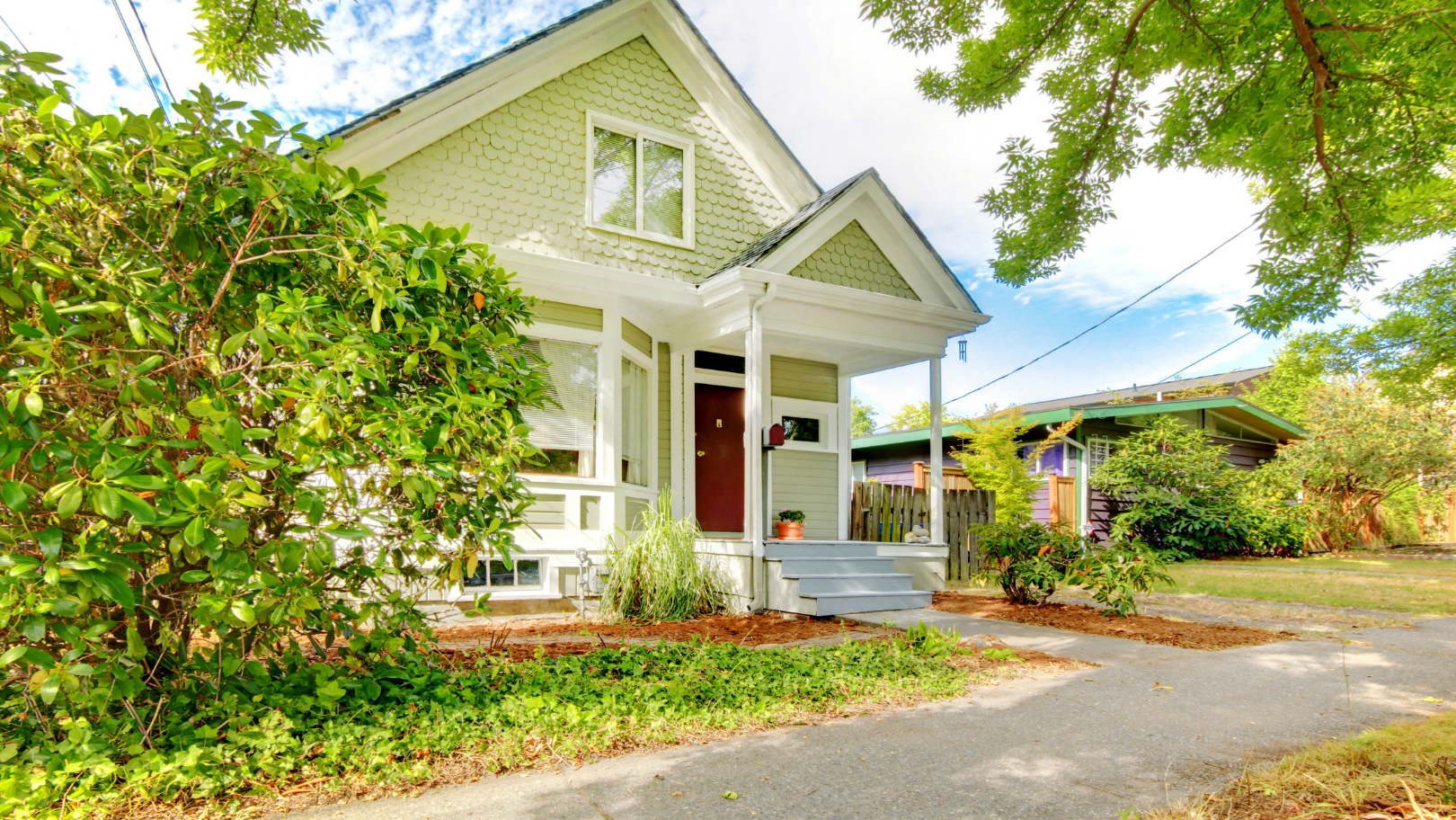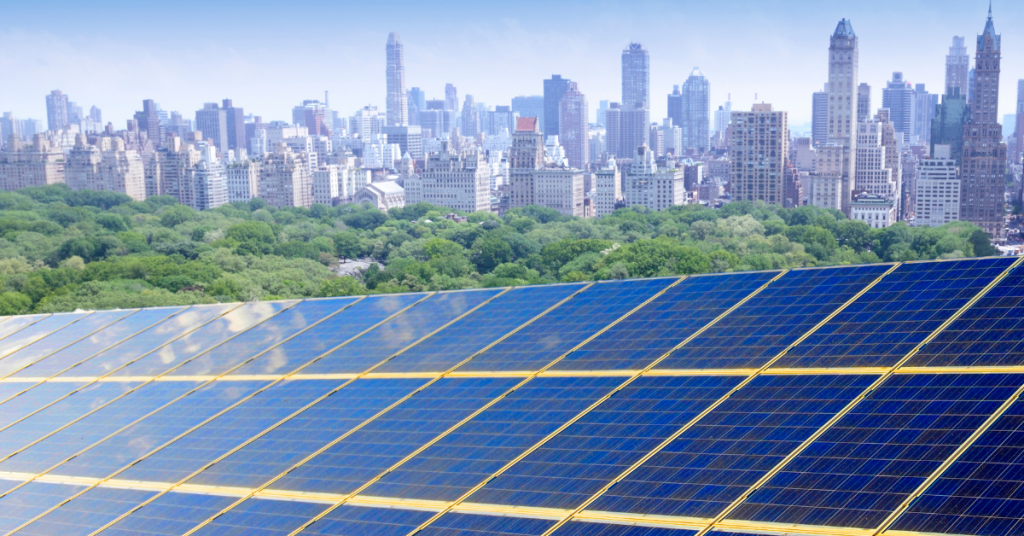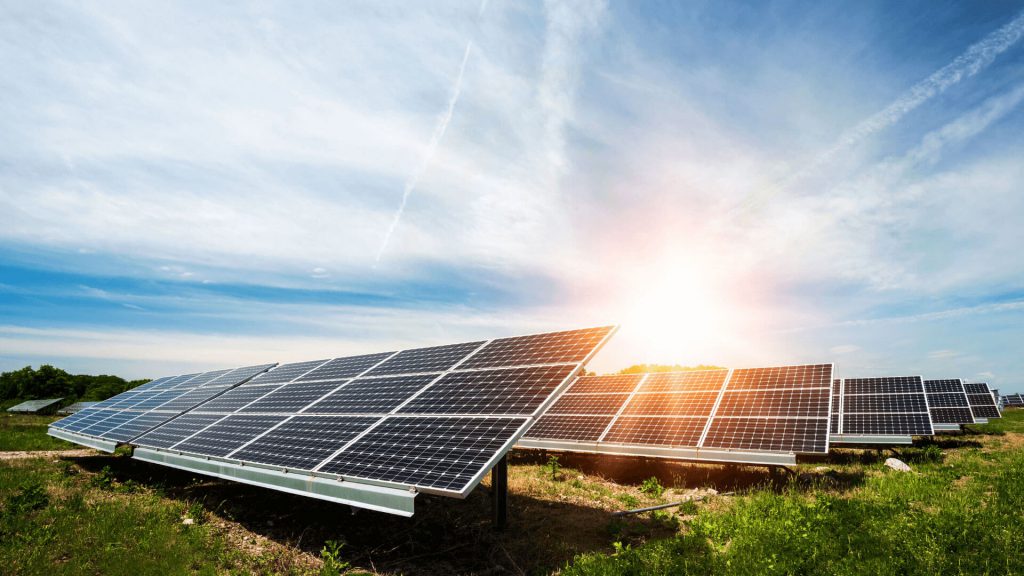This guide, created with Hudson Valley Green Homes, compiles the best tips for New York homeowners to create a more sustainable home. Scroll to learn how to improve your home’s energy efficiency, minimize your contribution to climate change, and take advantage of New York State climate policy for your home.
We all want to do our part to mitigate climate change, but it can be tough to know where to start. That’s why Marcy Cleveland, a Hudson Valley-based Green Realtor and BPI Building Analyst, makes it easy for New York homeowners to take action.
As a Green designated Realtor with Hudson Valley Green Homes at Keller Williams Realty, Marcy teaches clients small changes that can make their house more eco-friendly and valuable at the same time—all while saving them money. Whether it’s installing LED lights, practicing energy-efficient landscaping, ditching fossil fuels by converting to an air/ground source heat pump for heating and cooling or going solar, Marcy is an expert in making homes Green. Read on for Marcy’s tips for Greening your home and helping the state of New York fight climate change.
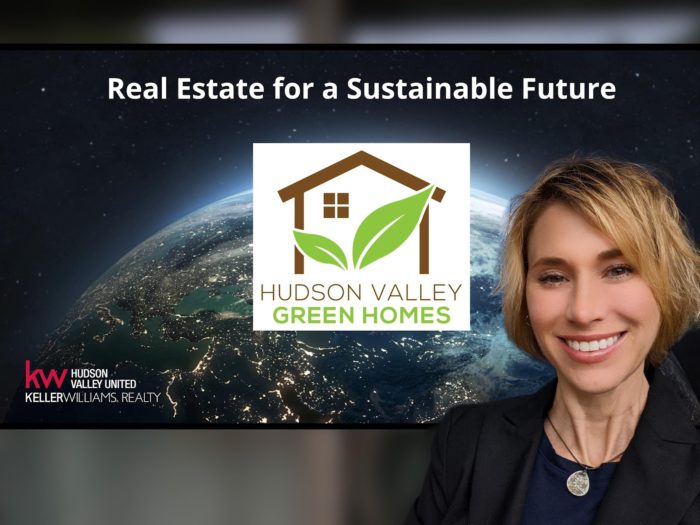
Table of Contents
5 Ways to Green Your Home
With climate change becoming more urgent every year, it is crucial that individuals start the transition to a more sustainable lifestyle. Here are five impactful ways homeowners can create a more eco-friendly home:
1. Get a Home Performance Assessment
In addition to being a Green Realtor, Marcy is also a certified Building Performance Institute (BPI) Building Analyst with Green Building Specialists. She advises homeowners to get a home performance assessment as an important first step towards a Greener home. “It’s like a doctor’s exam for your home energy use. An assessor will identify problem areas and potential for improvement,” she states. You can expect to pay between $300-$250 for a thorough assessment with a customized work scope, but Marcy points out that some residents may qualify for a free basic energy audit through the New York State Energy Research and Development Authority (NYSERDA) residential energy audit program. “It’s definitely worth checking out. Anyone interested can find an approved contractor on the NYSERDA website or call me!” says Marcy. “I have a small but mighty home performance assessment team who does a great job and gives you straight-forward, unbiased information.”
Building Analysts like Marcy use their building science knowledge to identify the best, immediate solutions to improve a home’s energy efficiency. A specially trained Home Energy Assessor can establish an energy efficiency baseline for a home, called a HES (Home Energy Score), which is similar to your car’s MPG rating. These certified assessors provide you with a detailed report from the Department of Energy showing opportunities for improvement and upgrades that will give you the biggest return.
2. Weatherize Your Building Envelope
The next step Marcy suggests is having your home weatherized (air sealing and additional insulation) to fix any “leaky” spots in your home’s building envelope.
Your building envelope, which is simply the separation of the interior and exterior of a building, is a term you will hear much more frequently in discussions about lowering your carbon footprint. A well-insulated, well-sealed envelope keeps heat inside during winter and outside during summer and that means less energy consumption throughout the year.
Your building envelope, which is simply the separation of the interior and exterior of a building, is a term you will hear much more frequently in discussions about lowering your carbon footprint. A well-insulated, well-sealed envelope keeps heat inside during winter and outside during summer and that means less energy consumption throughout the year.
Marcy points out that air sealing and adding extra insulation is especially important prior to investing in other upgrades such as heat pumps and solar panels. “If your home has a leaky building envelope with poor or no insulation, then your heat pump system has to work harder than it was designed to and won’t be nearly as efficient. You’ll require much more energy to be comfortable in your home. And more energy means higher utility costs each month along with extra demand on the electrical grid, or your solar panels, if you have them.”
NYSERDA offers loan options and financial assistance for income qualified individuals to help pay for weatherization and other energy upgrades. Check out Home Energy Performance Programs to learn more!
3. Upgrade Appliances and Lighting
A quick and easy way to go Green is to upgrade your old appliances to ENERGY STAR certified models and make sure any frequently used light fixtures have LED bulbs.
Homeowners often don’t realize how inefficient outdated appliances are. Refrigerators and freezers are the worst offenders as they run 24/7. But other appliances such as dishwashers and washing machines can be ENERGY STAR rated as well. These appliances not only save electricity per year, but several thousand gallons of water over their lifetime. Sometimes investing in a new appliance sets you back at first, but the return on investment is always there—whether that’s in a couple of months in the form of energy savings or down the line when you sell your home for more.
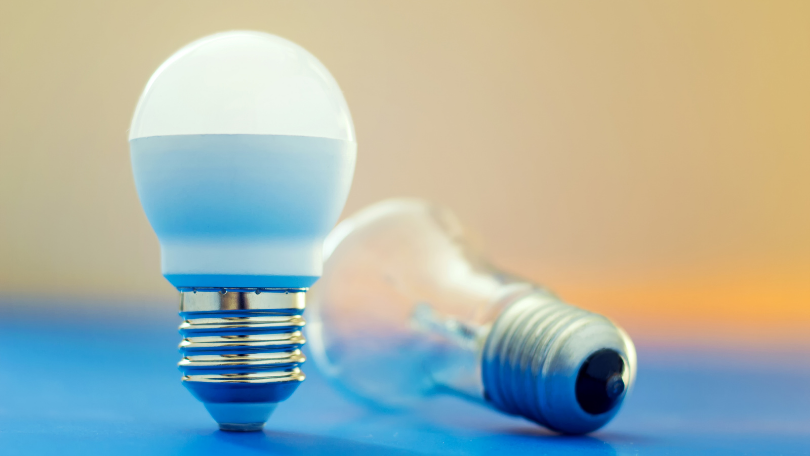
The light-emitting diode (LED) is today’s most energy-efficient and rapidly-developing lighting technology. Residential LEDs, especially ENERGY STAR rated products, use at least 75% less energy and last up to 25 times longer than incandescent lighting. Considering lighting tends to account for 10-20% of a typical energy bill, you can expect to see significant energy savings immediately so you shouldn’t wait until the old bulb burns out! There are many shapes, sizes, styles, and colors to choose from and prices have decreased considerably in the last decade. Marcy suggests reading up on DIY ways to make your home more energy-efficient on EnergyStar.gov. Here you can also browse a list of ENERGY STAR certified appliances.
4. Replace Old Heating Systems
There are ways to heat a house without fossil fuels, such as fully electric heat pumps, either geothermal or air-source. Heat pump technology is the most efficient option available for heating and cooling homes, and even providing hot water. Marcy gives accolades to air source heat pump units due to their ease of installation, energy efficiency, and their potential use of 100% renewable energy.
How efficient are they? Air-source heat pumps may reduce electricity use for heating and cooling by up to 50% and they dehumidify better than standard central air conditioners, so you won’t be using as much energy in the summer. You can expect to save hundreds to thousands of dollars in energy costs for these modern units if they are designed for colder climates.
“I recently encouraged a client to replace an antiquated heating system with an air source heat pump. She was a bit doubtful at first, but she took my advice and now loves it,” Marcy told us. “It was a real win for her and for the environment, especially since she was originally planning to convert the old gas furnace to an oil burner!”
Geothermal heat pumps are a very efficient option for antiquated heating and cooling systems. The dirt underneath the Earth’s surface remains at a relatively constant temperature throughout the year, remaining colder than air in the summer and warmer than the air in the winter. Though these heat pumps are more expensive to install, they have low operating costs because they utilize the constant temperature naturally existing in the ground instead of using fossil fuels to produce heat. Ground source heat pumps can reduce your energy usage by 30-60% and they effectively control humidity. A home performance assessor like Marcy can assist you with determining the best heating system options for your property.
5. Go Solar!
Solar panels are great, but they aren’t for everyone. Some homeowners can’t afford the upfront costs while others may not have the proper roof conditions for installing them. For homeowners who can’t install solar panels on their property, Marcy recommends enrolling in community solar. Joining a community solar farm gets you reliable savings on your electric bill while helping to preserve our planet by supporting clean energy. Subscribers can expect to save around 10% on their energy costs. “I recommend it to all my homeowners,” Marcy told us. “If they can’t afford rooftop solar right away or if the roof isn’t right, I suggest that they enroll in a community solar program. It’s good for their pocketbook and it’s good for the planet, so really it’s a no-brainer.”
Marcy makes it clear that going Green doesn’t have to just help the environment—it can be a money-motivated decision, too. Various studies have shown that homes equipped with solar and energy improvements, on average, sell for 5% more than similar homes. So you save money as an occupant plus get a boost when you are ready to sell.
Get More Info
Ways to Green Your Community
Once you’re done Greening your home, you can take it a step further by joining the Green efforts in your community. You’ll get to meet other like-minded environmental enthusiasts in your area and help make your area a better place to live. Along with Marcy, we’ve compiled a list of some impactful ways you can promote environmental justice and help make your community Greener, healthier and more sustainable.
Advocate for Green Policies
Become an advocate with Environmental Advocates NY to stay up-to-date on local, state, and federal environmental issues. They can connect you to local representatives to advocate for environmentally friendly policies. Most people don’t have the time to keep up with constant legislation changes and government initiatives, so EANY makes it easy for you to have a voice when it comes to policies impacting the environment.
Volunteer with Local Organizations
Local organizations are usually easy to get involved with and can often have the most direct impact on local sustainability. It feels awesome to create positive change by taking action and you’ll make lasting connections with the individuals you volunteer with. When we come together to make an impact, we create space for our communities to grow and thrive.
Capital Region
- The Capital Region Interfaith Creation Care Coalition (CRICCC) brings together faith groups in the Capital Region to mitigate the climate emergency and to preserve and restore natural resources in the area. They have many options for taking action to mitigate climate change through their organization.
- Volunteer with Feed Albany to help prepare, package, or distribute food for at risk and in need individuals in the Capital District of New York.
- Habitat for Humanity of Schenectady County helps build safe and affordable housing and provides support services to promote successful home purchase and ownership to ensure everyone has a decent place to live. Join the cause here.
Central New York
- Volunteer with the Onondaga Lake Conservation Corps to help improve the wildlife habitat in the Onondaga Lake through restoration projects.
- The Beaver Lake Nature Center welcomes new volunteers year round to assist with ongoing and seasonal duties. Beaver Lake offers diverse educational and recreational opportunities that support local and global stewardship of nature.
Hudson Valley
- Help Sustainable Hudson Valley advance climate change efforts and create communities where people and nature thrive by volunteering or donating.
- Scenic Hudson has a variety of ways you can help keep Hudson Valley beautiful, including eel monitoring!
- Bring your broken items to your local Repair Cafe. Repair Cafe of the Hudson Valley & Catskills aims to transform our throw-away economy and reduce how much stuff goes into the waste stream.
- Educate your community about the preservation and protection of the Hudson River by volunteering with Clearwater.
New York City
- Every year, 3 million New Yorkers participate in GrowNYC’s green programs. You can volunteer to help out with their programs in a variety of ways, including youth education, recycling, Greenmarkets, and more.
- There are over 600 community gardens across New York City. Volunteer to help support these green spaces and connect with likeminded people in your community through Green Guerillas.
- Become a member of WE ACT to support your local Environmental Justice initiatives.
- The Hudson River is an important ecological system for wildlife. You can help restore and protect this vital river by volunteering with Riverkeeper.
- Help create an equitable NYC food system by volunteering with Just Food to bring food justice to NYC citizens that lack adequate access to affordable, safe, and healthy food choices.
These are just a few of the endless options for Greening local communities across the state of New York. Whether it’s helping to end food insecurity, build a safe and reliable home, or clean up a local park, we hope you feel inspired to take part in making your community a better place for every resident.
New York Helps Homeowners Go Green
New York’s climate goals are more ambitious than those of any other state. Some of the state’s climate goals include 70% renewable energy by 2030 and 100% zero-emission electricity by 2040. “People will need to learn to adapt to meet those goals,” Marcy predicts. “And it’s not just about new construction. About 90% of our housing stock is pre-existing. To get us to our carbon reduction goals, people really need to consider doing a deep energy retrofit on their older homes and decarbonize by going fossil fuel free,” Marcy noted. Here are the programs New York offers residents to help make the necessary improvements on their homes.
Clean Heat Rebate Programs
New York homeowners can utilize clean heat rebate programs available through their utility company to save money while going Green. “Clean heat rebate programs, which come through your utility company, can help offset the cost of your heat pump conversion by hundreds to thousands of dollars.” Marcy tells us that many utility companies offer a more significant rebate if you remove your fossil fuel HVAC system when you install air source heat pumps. Ground source heat pump installations receive rebates as well as federal tax incentives.
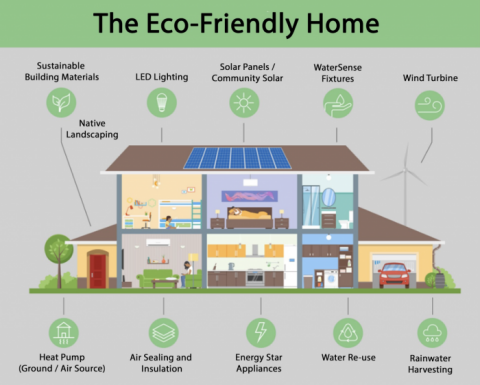
In her research, Marcy found that utility companies also offer a rebate if you install a heat pump hot water heater, which is a highly efficient and electrically powered unit. A typical discount is $700-$250 and can cover most of the cost of the water heater. “It’s an amazing opportunity to get rid of oil, natural gas, or propane in your home,” says Marcy. NYSERDA has two programs that can offset the cost of home performance upgrades: Empower and Assisted Home Performance. These can offer qualifying homeowners significant financial help for upgrades such as those listed above.
All-Electric Buildings Act
New York is helping residents achieve climate action goals through statewide initiatives primed to make their communities cleaner and healthier. The ultimate goal of swapping fossil fuels for electricity is the implementation of all-electric buildings powered by solar or another form of renewable energy. Sounds awesome, right?
Well, New York is working to pass the All-Electric Building Act by 2023. If enacted, no newly constructed building would be allowed to use any type of fossil fuel. JPMorgan Chase is already working on building the largest all-electric building in NYC with their new global headquarters at 270 Park Avenue. It will be powered entirely by renewable energy sourced from a local hydroelectric plant. This is another reason why community solar expansion is crucial for NYS and across the country. The more Americans we can reach with solar and other renewables, the easier the switch to clean energy will be for the country.
We’re excited to watch New York’s Green future unfold as more and more residents take action on fighting climate change. Green Realtors like Marcy are helping communities across the nation improve their carbon footprint and live a more sustainable lifestyle.
Looking ahead, Marcy has plans to spread awareness for these kinds of homeowner benefits while also inspiring climate action through her work as a Climate Reality Leader and assisting her local municipality to become a DEC Climate Smart Community. Though tackling climate change can be daunting, we hope these home improvement tips and Green initiatives inspire you to take one small step towards a more sustainable future for you and your community.
